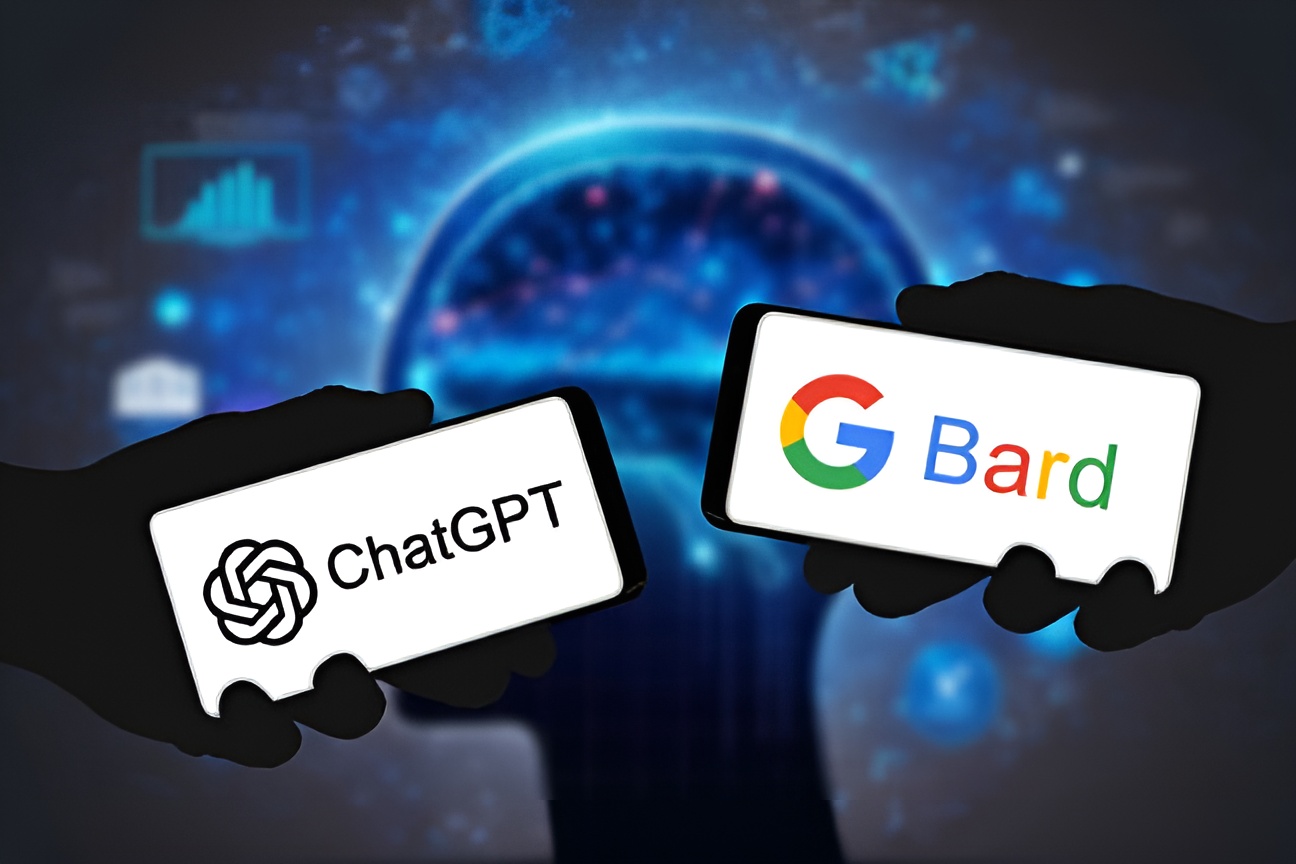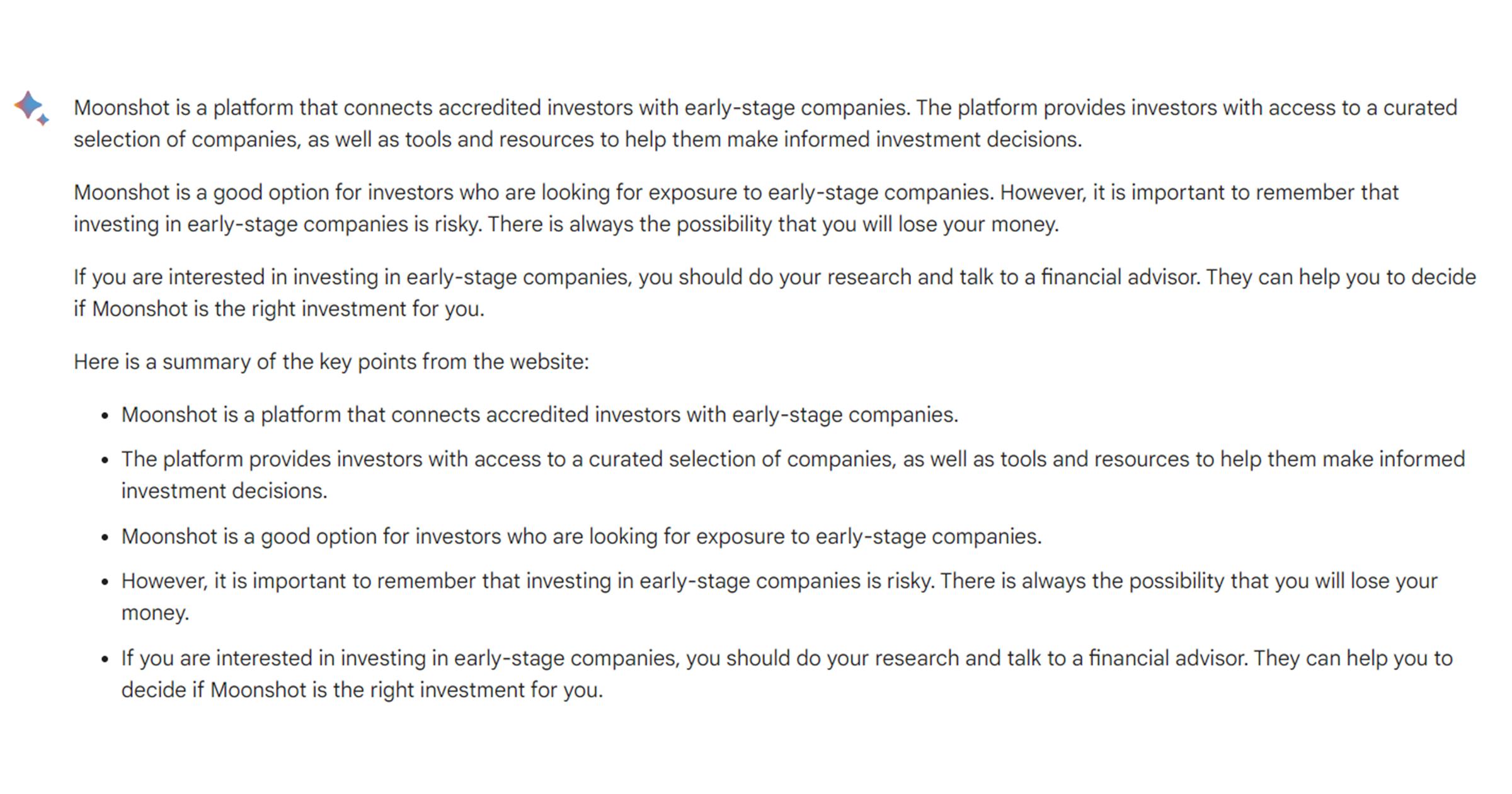General differences
Before we get to the results of the analysis of both AI bots conducted by Moonshot, let’s look at the general differences between the two.
1. Difference in language models
Under the hoods of ChatGPT and Bard sits a Large Language Model (LLM). LLMs are computer programs that can “understand” a question and predict what words should be used to answer the question. And they can generate a response in seconds, anything from a sentence to a whole book.
LLM is based on artificial neural networks that learn by doing. They run on supercomputers and have been trained on millions and even trillions of parameters.
Google effectively invented LLMs when they developed the Transformer model in 2017: the “T” in GPT stands for Transformer. The Transformer model was a breakthrough because it did not need to parse a sentence sequentially like its predecessors, but could take advantage of parallel processing. This gives an LLM the ability to train on much larger amounts of data compared to its predecessors.
OpenAI improved on the Transformer model and added Reinforced Learning with Human Feedback (RLHF) to help the model generate more natural responses. OpenAI released its own LLM back in 2018: GPT-1. It was trained on 177 million parameters. Since then it has trained its models on more and more parameters and has fine-tuned them. GPT-4 was released in March 2023 and is trained on over 100 trillion parameters which is a significant increase over the past 5 years.
Bard uses Google’s LLM called LaMDA. Unlike GPT, LaMDA is specifically trained on conversational text. As a result, it is trained on fewer parameters than GPT-4, 137 billion vs 100+ trillion, but its responses are more conversational in style. LaMDA does not use RLHF, but instead relies on three metrics (“quality, safety, and groundedness”) to fine-tune its responses. Some human feedback was used to calibrate these metrics.
For users, they will likely find that responses from ChatGPT are more detailed and accurate, perfect for structured and written responses, while Bard might sound more conversational. This was clearly illustrated in the ads surrounding Bard’s release, in which it famously provided an incorrect response to a question about the James Webb Telescope, which caused Google’s market cap to drop by USD 100 billion.
















